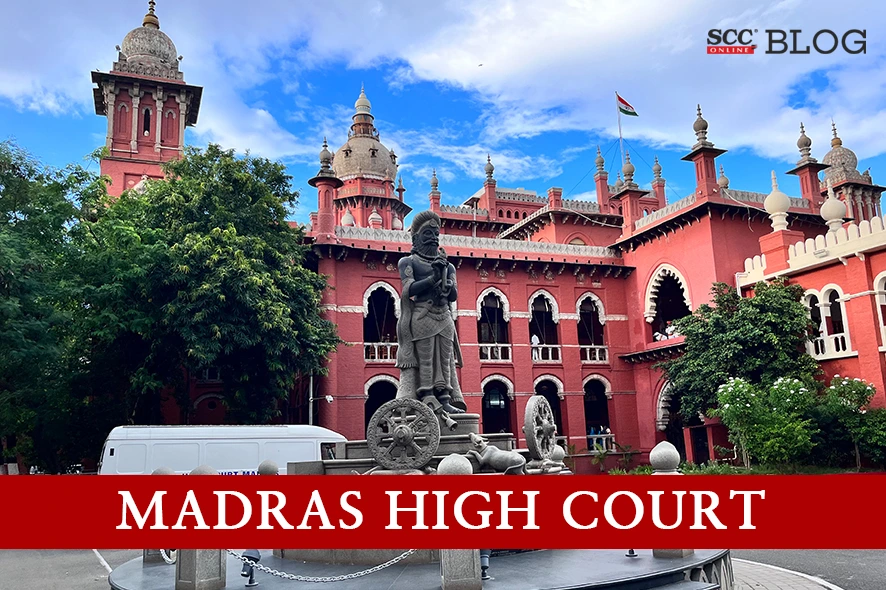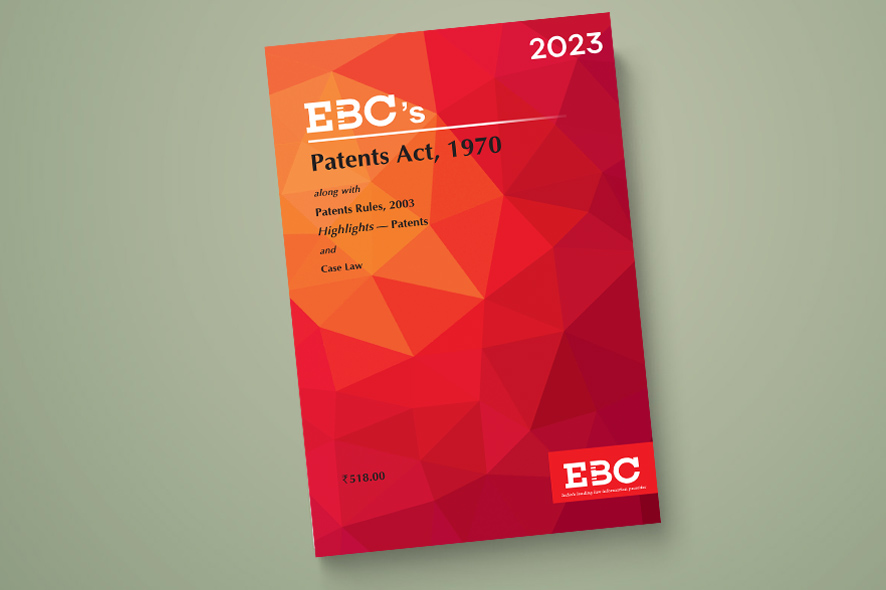Madras High Court: In an appeal filed under Section 117 of the Patents Act, 1970 , praying to set aside the order dated 31-03-2021 passed by the Assistant Controller of Patents & Design (‘Controller’) holding that the claimed subject matter of Claims 1-12 of the Patent Application fall outside the scope of Section 3(i) of the Patents Act, 1970 and is thus liable to proceed to grant and to publish the grant in the journal, Senthilkumar Ramamoorthy, J. while setting aside the impugned order, granted patent to the Chinese University and American Company related to an invention determining foetal fraction.
Background:
The appellants claim priority from multiple U.S. Provisional Applications for IN 4812, which is the national phase filing derived from a Patent Cooperation Treaty (PCT) application in respect of a claimed invention entitled “Fetal Genomic Analysis from a Maternal Biological Sample”.
IN 4812 was originally filed with 44 claims. The appellants received the First Examination Report (FER) on 29-11-2012 raising multiple objections, including objections under Sections 2(1)(j), 2(1)(ja), 3(i) and 10(5) of the Patents Act, 1970. The appellants contended before the Authority that the determination of the foetal fraction does not diagnose a disease and therefore, the claimed invention is not a diagnostic method.
The Assistant Controller of Patents examined the issue of applicability of Section 3 of the Patents Act to the claimed invention and reached the conclusion that amended claims 1 to 12 are not patent-eligible under Section 3(i) of the Patents Act because the said claims qualify as a diagnostic method, as it is a process of diagnosing that the foetus is suffering from genetic or other diseases.
Analysis:
The Court took note of Section 3(i) of the Patents Act and said that each limb of Section 3(i) is distinct and self-contained, as the first limb deals with human beings and the second with animals. Secondly, the disjunctive ‘or’ separates the two limbs. Further, the second part of Section 3(i) deals only with the treatment of animals and thereafter sets out three objects and purposes of treatment. When viewed in isolation, the first purpose “to render them free of disease” could apply to human beings. However, the first and the second limbs deal with distinct subjects; they are separated by the disjunctive “or”; and the pronoun “them” is used after the antecedent “animals”, thus, the said pronoun is referable only to the last antecedent “animals” and not to human beings. Further, the treatment is provided not only to free/cure a person of disease but also for prophylactic purposes, to alleviate pain, prevent aggravation of or to better manage a condition or disorder. Thus, the Court rejected the contention that the word “diagnostic” in Section 3(i) should be confined to treatment of human beings to render them free from disease. While viewing the word ‘diagnostic’ in association with “forms of treatment”, the Court said that it should be limited to diagnostic processes that disclose pathology for the treatment of human beings.
Concerning the contention that diagnostic processes should be confined to in vivo diagnosis, the Court said that in Section 3(i), there is no indication that the word ‘diagnostic’ should be confined to in vivo diagnosis.
After taking note of Clause 3(a) of Article 27 of the TRIPS Agreement, the Court listed the following which enables members to exclude from patent eligibility : ‘diagnostic, therapeutic and surgical methods for the treatment of ‘humans or animals’. Thus, Article 27(3)(a), indicates that the diagnostic method should be for the treatment of humans or animals. Further, no other limitation or restriction on the scope of the expression “diagnostic methods” is discernible from Article 27(3)(a). Therefore, the Court concluded that the travaux préparatoires of Article 27(3)(a) also does not support exempting in vitro diagnostic processes or methods from patent ineligibility.
The Court noted that the earlier versions of the patent manuals of practice and procedure limit patent ineligibility to in vivo diagnosis, however, there is nothing in the current applicable final manual or guidelines which supports the construction that in vivo diagnostic methods are excluded. It said that the manuals of the Patent Office are not determinative of the scope of Section 3(i) and, at most, they are indicative of the manner in which the Patent Office understood the provision.
Moreover, the Court said that Section 3(i) uses the word “diagnostic” in juxtaposition with forms of treatment, such as medicinal, surgical and therapeutic, and in association with the words “other treatment of human beings’ thus, Section 3(i) differs materially from Articles 52(4) and 53(c) of the European Patents Convention (‘EPC’) because it excludes from patent eligibility any process for the diagnostic treatment of human beings, whereas Article 52(4) and 53(c) exclude only diagnostic methods practised on the human body. Thus, as per the Court the word “diagnostic” should receive a construction which is in consonance with text and context. Such construction does not call for curtailment by limiting the scope of “diagnostic” to in vivo diagnosis or definitive diagnosis. Equally, expansion is not called for by extension to any process relating to or of some value in diagnosis.
The Court suggested that the claims must be examined in the context of the complete specification, to determine whether it specifies a process for making a diagnosis for treatment. Such determination should be made by assuming that a person(s) skilled in the art, including a medical doctor, examines the claims and complete specification. If it is concluded that a diagnosis for treatment may be made, even if such diagnosis is not definitive, it would be patent ineligible, whereas, if diagnosis for treatment cannot be made, it would be patent eligible.
Concerning the issue that there is a case to exclude certain types of tests from the ambit of the expression “diagnostic” in Section 3(i), the Court said that the embodiments of a claimed invention are relevant only for the purpose of ascertaining whether the claimed invention per se points to a diagnosis for treatment. If such a process does not uncover pathology for any reason, it would not be diagnostic for purposes of Section 3(i). Further, it concluded that from the perspective of deciding a patent application, use cases are relevant only for the limited purpose of ascertaining whether the claimed invention can per se uncover pathology and form the basis of treatment.
On the distinction between diagnosis and screening, the Court held that if a screening test can identify the existence or non-existence of a disease, disorder or condition and/or the site, extent, severity or other aspects for treatment of human beings, irrespective of whether the person concerned is symptomatic or asymptomatic, such screening test would qualify as a diagnostic test.
The Court after examining the basic science behind non-invasive prenatal testing, and on examining claims 1 and 9 of the amended claims, said that the claimed invention is per se incapable of identifying the existence or otherwise of a disease, disorder or condition and further testing would be required for such purpose. It provides an indicator, foetal fraction, which is relevant for further testing to arrive at a diagnosis. Thus, it held that the scope of ‘diagnostic’ in Section 3(i) should not be unduly curtailed by limiting it to in vivo or definitive diagnosis. However, its scope should not be unduly expanded by implying the words “relating to” diagnosis. Further, it held that the determination of foetal fraction is related to ‘diagnosis’ but is not ‘diagnostic’.
Further, the Court said that with a view to incentivise inventors in these cutting-edge areas, without compromising on the public policy, exclusion from patent eligibility of methods of diagnosis and treatment adopted by medical doctors, there is a need to consider options such as restricting the scope of the expression ‘diagnostic’ in Section 3(i) to in vivo processes and counter balancing by providing for compulsory licensing.
[Chinese University of Hong Kong v Assistant Controller of Patents & Designs, 2023 SCC OnLine Mad 6372, decided on 12-10-2023]
Advocates who appeared in this case :
For Appellants: Advocate Vindhya S. Mani, Advocate Kiran Manokaran, Advocate Vaishali Joshi, Advocate Sheerabdhinath
For Respondent: SPC S.Diwakar
Amicus curiae: Advocate Adarsh Ramanujan








